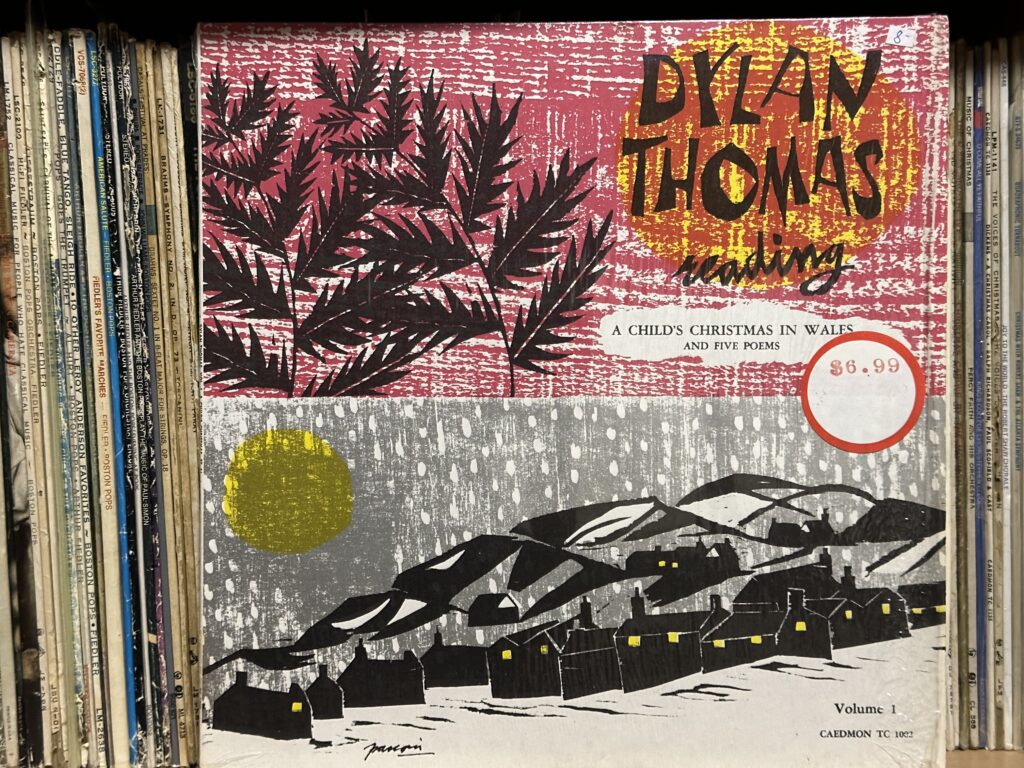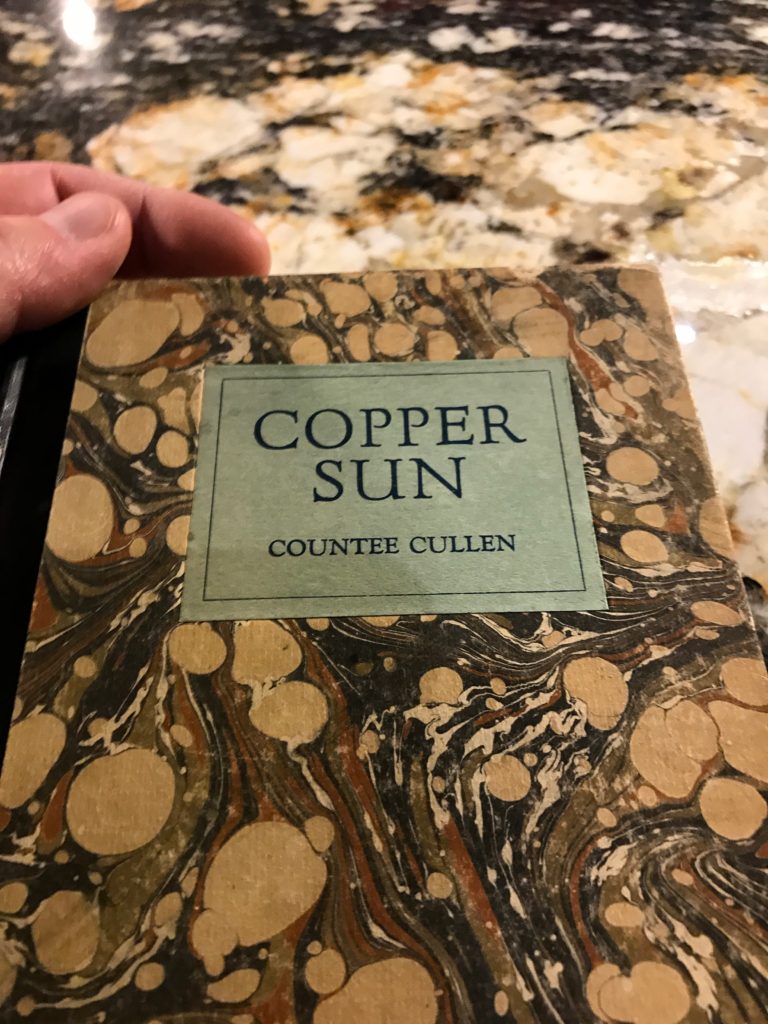
Album of the Week, December 30, 2023
It’s the shoulder season of the year, when the Christmas trees are still up but everyone has been Whamageddoned, most of the leftovers from the holiday meal have been eaten, and one could be forgiven for yearning for something to listen to that’s not holiday music. Time for something different, and this record, while still seasonally appropriate, certainly fits the bill.
The Welsh poet Dylan Thomas might be best remembered (rightly so) for “Do Not Go Gentle Into That Good Night,” but it is his story “A Child’s Christmas in Wales” that links today’s record with our holiday theme. And what a story it is, especially read in Thomas’s Welsh baritone. The record at hand, Reading Vol. 1, was originally released in 1952, a year before the poet’s death at age 39 from an undiagnosed bronchial infection, complicated by his heavy drinking.
Reading (Vol. 1) is significant in a few other ways. First, it was recorded during the poet’s second American tour, which established his reputation as a poet and as an unpredictably drunken performer. Second, it was the first recording on a new record label. Named after the oldest known English poet, Caedmon Records was founded on a shoestring budget by Barbara Holdridge and Marianne (Roney) Mantell, when both were two years out of Hunter College. They approached Thomas while he was on tour, and convinced him to record his poems.
Thomas recorded five of his best known poems for the record. Different versions have different running orders, but in my copy (released in 1958), the first poem to appear is “Fern Hill.” Written in 1945 as a memory of a farm Thomas visited when a boy, the poem features an unusual nine-line stanza with internal slanted rhyme, and mourns the poet’s inability to escape the passing of time: “Oh as I was young and easy in the mercy of his means,/Time held me green and dying/Though I sang in my chains like the sea.”
The second poem on the record is “Do Not Go Gentle Into That Good Night.” Probably the most famous villanelle in the English language, Thomas’s fierce address to a dying man, named in the last stanza as his father, has been interpreted both literally and metaphorically over the years as an ode and exhortation to everything from dying relatives to endangered democratic ideals. Thomas’s reading here is both mellifluous and brief, but no less devastating for the brevity.
Less familiar is “In the white giant’s thigh,” which is differently devastating, as the poet’s memory of the carnal, physical joys of better times (summer? Youth?) contrasts with the stark reality of the (cold, aged) present: “And the mole snout blunt under his pilgrimage of domes,/Or, butter fat goosegirls, bounced in a gambo bed,/Their breasts full of honey, under their gander king/Trounced by his wings in the hissing shippen, long dead/And gone that barley dark where their clogs danced in the spring…” The pure pleasure of the language itself holds the dusty fate of the goosegirls at bay; these are no dead thoughts.
“The Ballad of the Long-Legged Bait” is the longest poem on the record, and the second longest work after “A Child’s Christmas in Wales.” An epic ode to a fisherman who now seems stranded on dry land, the poem both celebrates the wild hunt of the fisherman at the sea and mourns his stranding on land, which not only domesticates him but somehow plants the sea itself with crops: “Good-bye, good luck, struck the sun and the moon,/To the fisherman lost on the land./He stands alone in the door of his home,/With his long-legged heart in his hand.”
The final poem on the record, “Ceremony After a Fire Raid,” continues in the bleak mood of the other tracks, but here at last there is an apocalypse, as the land is scoured clean after the wreckage of the bombing incendiary damage of the air raid: “The masses of the infant-bearing sea/Erupt, fountain, and enter to utter for ever/Glory glory glory.”
Thomas could be apocalyptic when the mood took him, which is why the irony stands that the first part of the album, with his wryly observed portrait of childhood, recorded only to fill the album, is the best-known recording on the album. I deliberately saved the first track for last, as “A Child’s Christmas in Wales” was not only recorded last, it was added as an afterthought. After recording the five poems above, Thomas was told that they needed more material to fill the album, and he suggested this story, originally published in Harper’s Bazaar and redacted together from a radio broadcast he wrote for the BBC and a 1947 essay written for Picture Post Magazine. The resulting work is delightfully episodic, with the unforgettable episode of the burned Christmas dinner at the Protheros leading off—the dialog between the narrator and young Jim Prothero stands as an economical masterpiece of wry comedy. (Sent to call the fire brigade, they say, “Let’s call the police as well…” “And the ambulance.” “And Ernie Jenkins, he likes fires.”) There follows the exhausted and stuffed uncles, the tipsy aunts, the caroling to the haunted house. The whole thing is a closely observed piece of brilliance, a celebration of the delights of festival excess and idle childhood free-range play.
Little wonder that “A Child’s Christmas in Wales” led to the establishment of Caedmon Records as a successful enterprise. The new label went on to record many great midcentury poets and to pave the way for later audio innovations—audiobooks, anyone? We’ll hear more from Caedmon another time. Next week, though, we’ll dive into a different journey.
You can listen to the album here:

